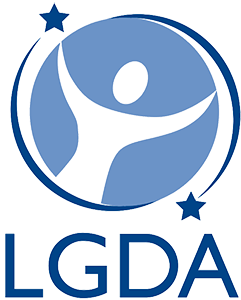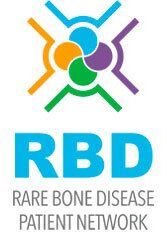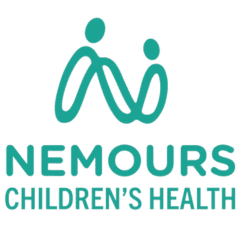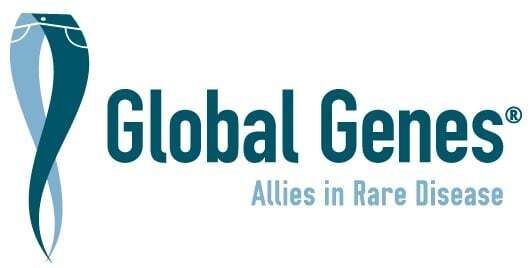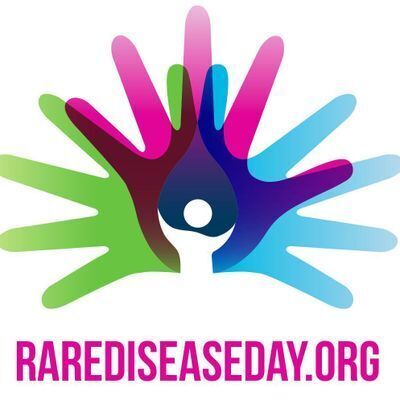
See the bottom of this post for specific CLA - Rare Disease Day graphics.
Join the Global Chain for Life: Rare Disease Day
Rare Disease Day is a pivotal event that galvanizes global efforts to raise awareness and advocate for people living with rare diseases. This year, on February 29, is not just a date on the calendar; it's a worldwide movement aimed at bringing equity in healthcare, social opportunities, and access to diagnosis and therapies for those affected by rare diseases.
What is Rare Disease Day?
Initiated in 2008, Rare Disease Day has evolved into a globally-coordinated movement, dedicated to the rare disease community. Its impact goes beyond raising awareness; it's about building an international network that transcends disease types, geography, and cultural barriers, uniting everyone in a common goal. This day is about celebrating the resilience and strength of those living with rare diseases and their families, and working together towards a brighter, more inclusive future.
The Goals of Rare Disease Day
Rare Disease Day focuses on several key objectives:
- Raising Awareness: This day aims to increase public understanding of rare diseases and their impact on individuals' lives.
- Advocacy for Change: It's an opportunity to advocate for better resources, research, and treatments for rare disease patients.
- Building Community: Rare Disease Day strengthens the global rare disease community, encouraging collaboration and support among patients, families, healthcare professionals, researchers, and policymakers.
How Everyone Can Participate
Raising Awareness Online
- Social Media Campaigns: Use banners, filters, and profile frames specifically designed for Facebook, Instagram, and other social platforms. LGDA created graphics, specific to CLAs, for the community. See bottom of blog post.
- Virtual Backgrounds: For professional or personal online meetings on platforms like Google Meets, Zoom, and Teams, use virtual backgrounds that show your support.
- Key Statistics and Infographics: Share informative content that highlights critical facts and figures about rare diseases.
Educational Tools
- Toolkit for Children and Teenagers: This includes materials to help explain the challenges of living with a rare disease to young people.
- Posters: Visually engaging posters can be used in schools, workplaces, and public areas to draw attention to the cause.
All these tools and more can be found on the official website: rarediseaseday.org.
Global Chain for Life
One of the most striking initiatives is the Global Chain of Lights. Here's how you can be a part of it:
- Light Up for Rare: At 7:00 PM local time on February 28, people are encouraged to light up or decorate their homes in the colors representing rare diseases.
- Showcase Creativity: Display films or messages of support from windows using TVs or laptops. The hashtag #LightUpForRare can be used on social media to share your participation.
Join the Movement
By joining the Global Chain for Life, you're not just lighting up a space; you're illuminating the challenges and hopes of the 300 million people worldwide living with a rare disease. Your participation symbolizes solidarity and a shared commitment to improving lives.
Conclusion
Rare Disease Day is more than an annual event; it's a lifeline that connects individuals, families, and communities. It's a call to action for everyone to contribute to a world where every person living with a rare disease has access to the best care and support. Remember, each light, each post, and each conversation sparks a larger global movement towards a brighter future. Join in, raise awareness, and be a part of this extraordinary chain of change.
Let's light up the world this Rare Disease Day!
Join the conversation and show your support using hashtags #LightUpForRare and #CLAawareness, and don't forget to tag @lgdalliance in your posts!
Social Media Graphics for the CLA Community
The graphics below will be downloaded to your computer or phone to help you celebrate Rare Disease Day. They will not open in a separate tab. They are formatted for Instagram 1080 x 1080 px, but also work for Facebook.
General Awareness of CLAs
- Complex Lymphatic Anomaly
- Central Conducting Lymphatic Anomaly
- Generalized Lymphatic Anomaly
- Gorham Stout Disease
- Kaposiform Lymphangiomatosis Anomaly
- I'm Rare! Show your colors
What is.....
- Central Conducting Lymphatic Anomaly
- Generalized Lymphatic Anomaly
- Gorham Stout Disease
- Kaposiform Lymphatic Anomaly
Someone I love has a.....
Captions for social media posts
These suggests captions can be shortened or you can add your own personal story.
Understanding Generalized Lymphatic Anomaly (GLA)
Did you know that Generalized Lymphatic Anomaly, once known as Lymphangiomatosis, affects the body's lymphatic system, involving multiple areas including soft tissues, bones, and vital organs such as the spleen?
GLA can emerge at birth but is often discovered during childhood or early adulthood, marking a critical need for awareness and timely diagnosis. This condition can lead to complications like abnormal fluid collection around the heart, lungs, and abdomen, and even impact bone health, most commonly affecting the ribs and spine.
Interestingly, research has linked GLA to mutations in the PIK3CA gene, offering a glimpse of hope towards understanding and potentially targeting the disease more effectively.
Why Should We Care?
Awareness is the first step towards support, research, and treatment. By understanding more about GLA, we can foster a community that supports affected individuals and their families, encourages early diagnosis, and promotes research into treatments.
Let's spread the word about GLA. Sharing knowledge can empower others and highlight the importance of research in rare diseases. Whether you're a medical professional, a patient, a caregiver, or simply an advocate for health awareness, your voice matters.
What Can You Do?
- Educate yourself and others about GLA and its impact on individuals and families.
- Support research and organizations dedicated to rare diseases.
- Share this post to raise awareness and build a community of care and support.
Together, we can make a difference in the lives of those affected by Generalized Lymphatic Anomaly.
Shining a Light on Gorham Stout Disease (GSD)
Ever heard of the "Vanishing Bone Disease"? Gorham-Stout Disease is a rare medical condition characterized by the progressive loss of bone's hard outer surface, leading to what's often described as bones "disappearing." This disease primarily affects the axial skeleton, including the head, neck, back, and chest.
GSD is unpredictable – it can progress rapidly or may spontaneously stabilize, challenging those affected and their healthcare providers. The disease can extend to nearby bones and cause a variety of symptoms, from pathologic fractures to serious complications like fluid buildup around the heart and lungs, cerebral spinal fluid leaks, and even paralysis due to neurological damage.
Understanding the Cause
Research suggests that mutations in the KRAS gene play a significant role in the development of GSD, opening the door for potential targeted treatments in the future.
Why This Matters
Awareness about Gorham-Stout Disease is crucial. It not only helps in early diagnosis and management but also supports affected individuals and their families by fostering a community of understanding and support.
Let’s Spread the Word
- Educate yourself and others about the challenges and realities of living with GSD.
- Advocate for research and development in treatments for rare diseases like GSD.
- Share this post to raise awareness and show support for those affected by this rare condition.
Your voice can make a difference. By bringing attention to Gorham-Stout Disease, we can encourage research, support affected individuals, and build a community of care and understanding. Together, we can face the challenges of rare diseases like GSD.
Raising Awareness for Kaposiform Lymphangiomatosis (KLA)
Kaposiform Lymphangiomatosis, or KLA, represents a rare yet aggressive form of lymphatic anomaly that blends aspects of neoplasia (uncontrolled cell growth) and malformation. This condition is more severe and aggressive than Generalized Lymphatic Anomaly (GLA), with unique challenges including rapid growth, potential for significant bleeding, and commonly affecting the chest area.
KLA is notable for its overlap with both Generalized Lymphatic Anomaly (GLA) and Central Conducting Lymphatic Anomaly (CCLA), yet it stands out due to the presence of spindle cells and a tendency for progressive and extensive growth.
Diagnosis and Causes
Diagnosing KLA involves detecting elevated levels of angiopoietin 2 (Ang2) in the blood, a protein that plays a critical role in the growth of endothelial cells. Research points towards mutations in the NRAS, CBL, or HRAS genes as potential causes, paving the way for targeted research and treatment strategies.
Why It's Important
Awareness and understanding of Kaposiform Lymphangiomatosis are vital. By educating ourselves and the community, we can support those affected and promote research into more effective treatments.
How You Can Help
- Learn and share information about KLA to increase awareness.
- Support research efforts and organizations dedicated to studying KLA and similar lymphatic anomalies.
- Engage in conversations to spread knowledge and reduce the isolation felt by families dealing with KLA.
Your support can light the way for advancements in care and treatment for those affected by Kaposiform Lymphangiomatosis. Let's come together to make a difference in the lives of those battling KLA.
Spotlight on Central Conducting Lymphatic Anomaly (CCLA)
Central Conducting Lymphatic Anomaly, or CCLA, is a lesser-known yet significant condition affecting the lymphatic system, particularly within the torso. This anomaly leads to dilated and dysfunctional lymphatic vessels, which can cause lymphatic fluid to backflow into tissues, resulting in various complications.
Patients with CCLA may experience symptoms such as lymphatic fluid accumulation around the lungs (chylous effusions), excess fluid in the abdomen (ascites), loss of lymph fluid through the intestines (protein losing enteropathy), and swelling in the legs and feet. These symptoms arise from the abnormal formation of lymphatic valves and the subsequent dysfunction of large lymphatic vessels.
Understanding the Causes
CCLA can be caused by both inherited mutations (in genes like EPHB4 and MDFIC) and somatic mutations (in genes such as ARAF, KRAS, and BRAF). This insight into the genetic basis of CCLA opens potential pathways for targeted treatments and interventions.
Why Awareness Matters
Raising awareness about CCLA is crucial for several reasons. It helps in recognizing symptoms early, supporting affected individuals, and encouraging research into effective treatments. Awareness also builds a community of support for those affected, reducing isolation and fostering understanding.
How You Can Contribute
- Educate yourself and others about CCLA and its effects on those who live with it.
- Advocate for research funding and support services for individuals with lymphatic anomalies.
- Share this post to spread the word and increase awareness of CCLA.
By shining a light on Central Conducting Lymphatic Anomaly, we can help affected individuals receive the recognition and support they need. Let’s stand together in spreading knowledge and compassion for those facing CCLA.
Suggested Tags
#CLAawareness #LymphaticAnomaly #HealthCommunity #rarediseases #rarediseaseday #RareDiseaseSupport #ComplexLymphaticAnomalies
